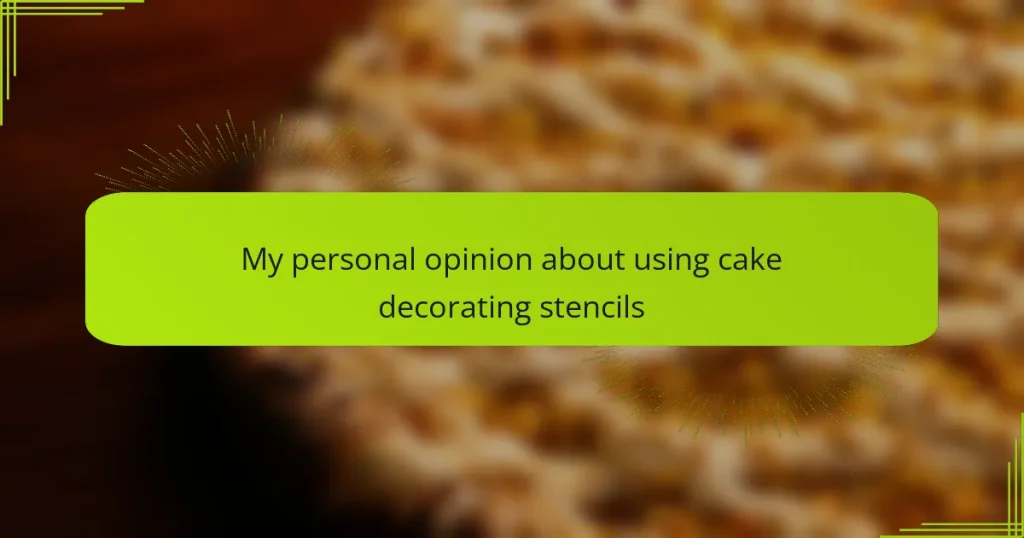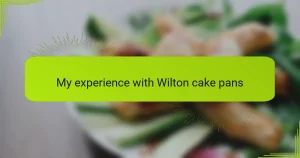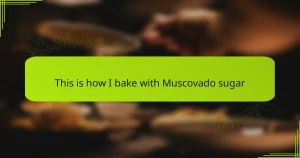Key takeaways
- Cake decorating stencils simplify the decorating process, allowing for creative expression and consistent results without advanced skills.
- Different types of stencils—ranging from simple to intricate designs—can enhance the mood of a cake and suit various occasions.
- Proper stencil application involves a smooth cake surface, careful positioning, and gentle dabbing to achieve clean designs.
- Common challenges include keeping stencils in place and managing uneven surfaces, with recommended solutions like using adhesive and chilling cakes for better results.
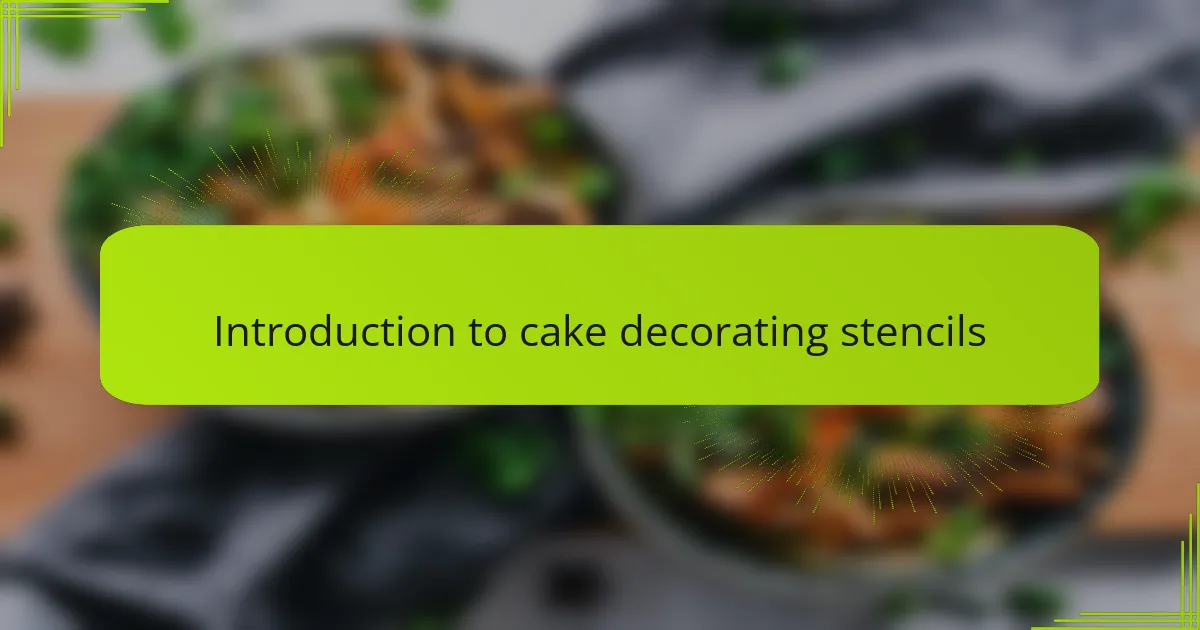
Introduction to cake decorating stencils
Cake decorating stencils are simple tools that transform a plain cake into a work of art. From my experience, they’re like little magic templates that help you add patterns or messages with ease, even if you’re not a pro at piping or freehand designs. Have you ever struggled to get those perfect shapes or consistent designs by hand? That’s where stencils become game changers.
What I find truly appealing about stencils is how they bridge creativity and convenience. You just lay the stencil on your cake, dab on some icing or cocoa powder, and voilà — a clean, crisp design appears. It feels satisfying, almost like a small victory in the kitchen, especially when you’re short on time but still want an impressive result.
Using stencils also invites experimentation. You can mix colors, try different textures, or layer multiple patterns without the stress of freehand decorating. It reminds me of painting by numbers—relaxing, fun, and rewarding. Don’t you think every baker deserves a little help to make their desserts look as delightful as they taste?
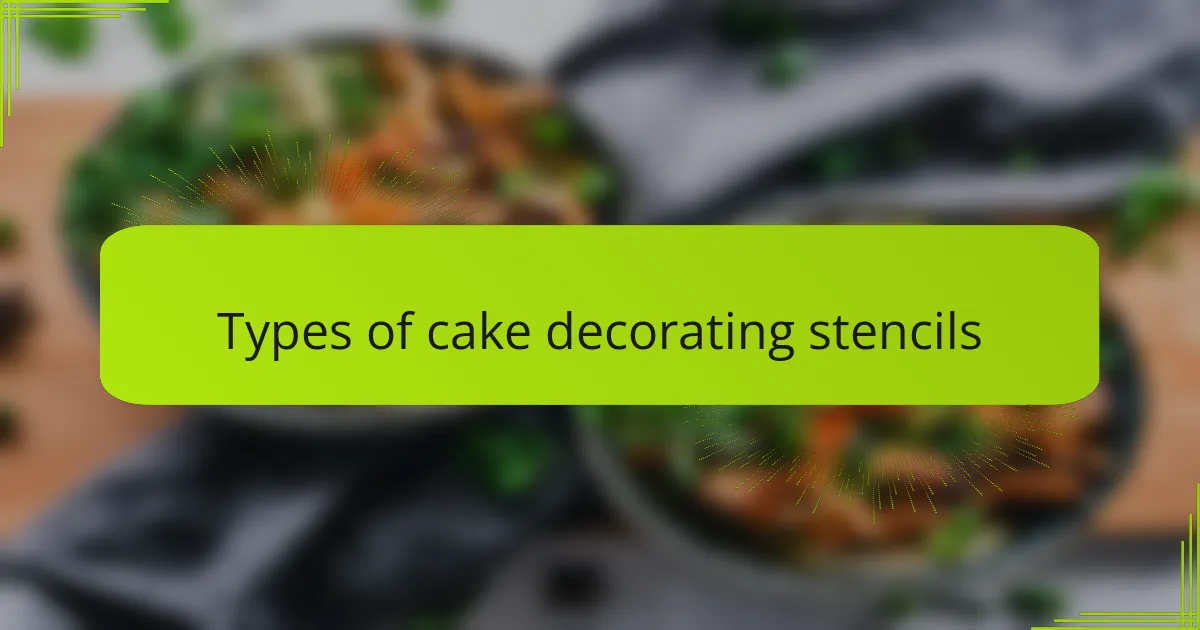
Types of cake decorating stencils
There’s quite a variety when it comes to cake decorating stencils, from basic geometric shapes to intricate lace patterns. In my experience, simple designs like stars or hearts are perfect for beginners—they offer just enough flair without overwhelming you. Have you ever noticed how a well-chosen stencil can instantly set the mood of a cake, whether it’s playful or elegant?
Then there are themed stencils, like seasonal motifs or celebratory messages. I remember using a snowflake stencil last winter that made a humble cake look like it belonged on a holiday table. It struck me how these themed options bring so much personality to your creation without needing advanced skills.
Finally, reusable plastic or mylar stencils have been my go-to because they’re sturdy and easy to clean. I find that investing in a good-quality stencil pays off, especially when you want to experiment with layering designs or more complex textures. Do you prefer something disposable for a one-off event, or do you gravitate toward tools that grow with your baking adventures?
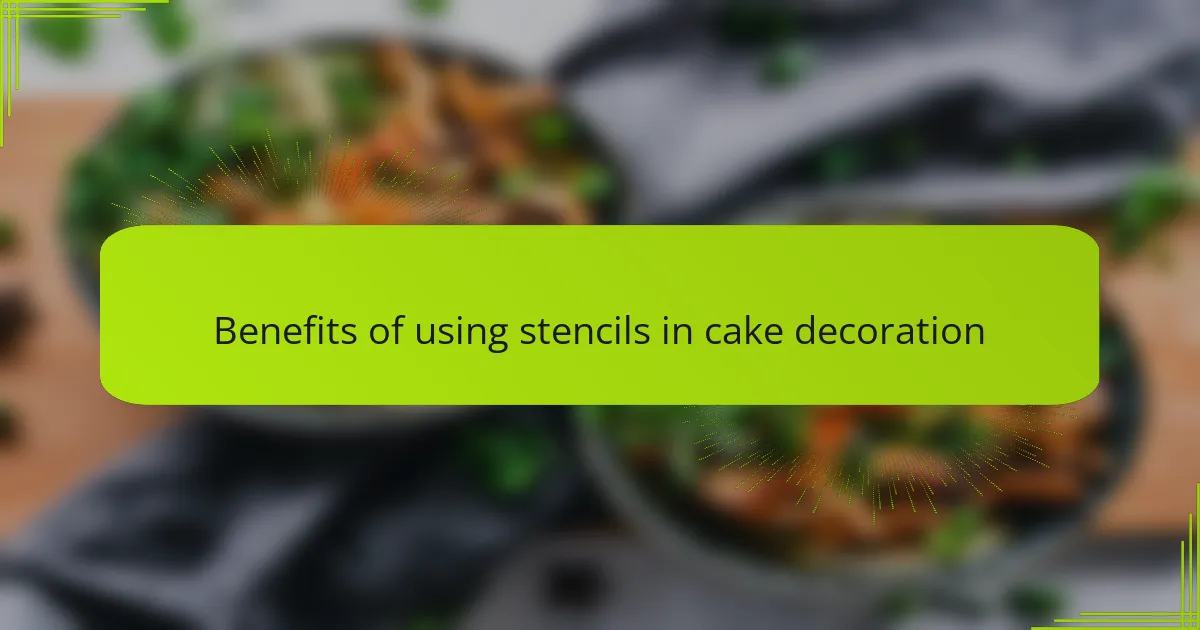
Benefits of using stencils in cake decoration
One of the biggest benefits I’ve noticed with using stencils is the sheer time-saving factor. When I’m juggling multiple dessert orders or just trying to get dinner on the table, having a stencil to quickly create a neat, professional look feels like a lifesaver. Have you ever spent ages trying to make perfect shapes freehand, only to end up frustrated? Stencils take that pressure off and let creativity flow effortlessly.
Another benefit that really resonates with me is consistency. I remember a birthday party where I had to decorate a dozen cupcakes; using a stencil made sure each one looked almost identical. It gave me confidence because the challenge of replicating designs by hand disappeared. Isn’t it comforting to know your decorations can look polished without being an expert artist?
Lastly, stencils open doors to playful experiments that might otherwise feel intimidating. I love layering patterns or blending colors because stencils provide a reliable framework to build on. You can explore different techniques without the fear of messing up completely. Don’t you think that’s what makes baking more enjoyable—having a safety net while pushing creative boundaries?
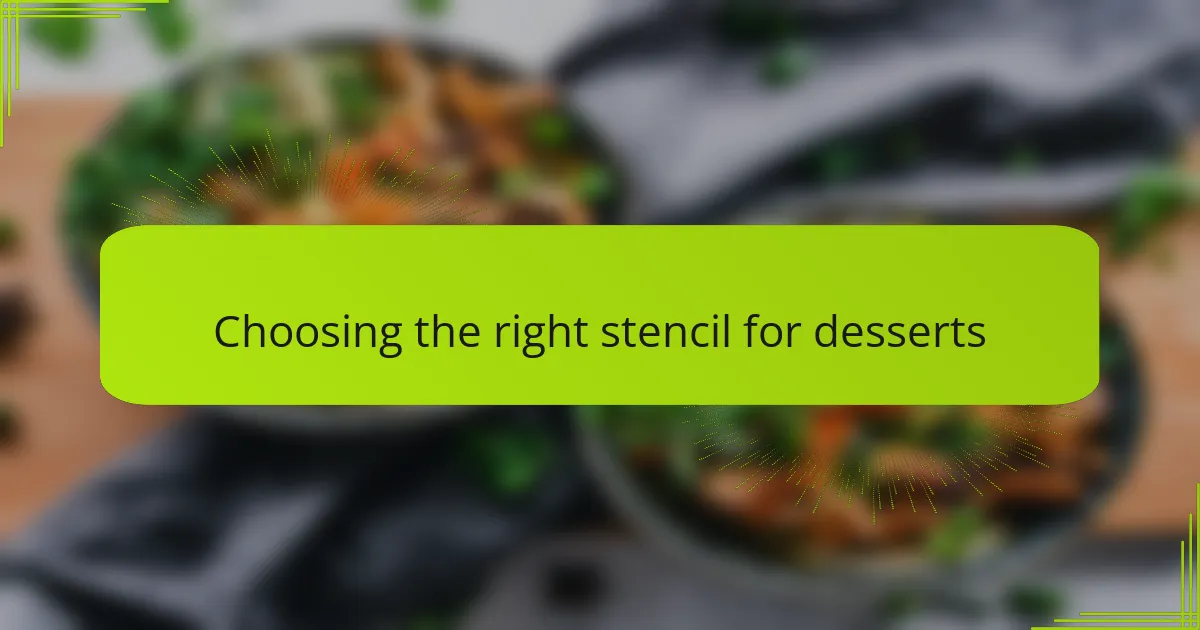
Choosing the right stencil for desserts
Choosing the right stencil for desserts really hinges on the style you want to convey. I’ve noticed that simpler patterns tend to work best for delicate cakes, while bold, graphic designs shine beautifully on cupcakes or cookies. Have you ever picked a stencil that just didn’t match the vibe you were aiming for? That mismatch can make the whole dessert feel off, even if the technique is flawless.
Material is another aspect I pay close attention to. From my experience, flexible mylar stencils hug curved surfaces like cakes perfectly, making the application smoother and the design sharper. On the other hand, thicker plastic stencils feel sturdier and are great when I want to dab on heavier textures like icing or powdered sugar without smudging. What type do you find easier to work with—something bendy or rigid?
Lastly, size matters more than I initially thought. When I first started, I grabbed large stencils for small cupcakes, and the design overwhelmed the dessert. Now, I always choose a stencil size that complements the dessert’s dimensions, which makes the final result look balanced and intentional. Don’t you think that paying attention to these details transforms simple baking into an art form?
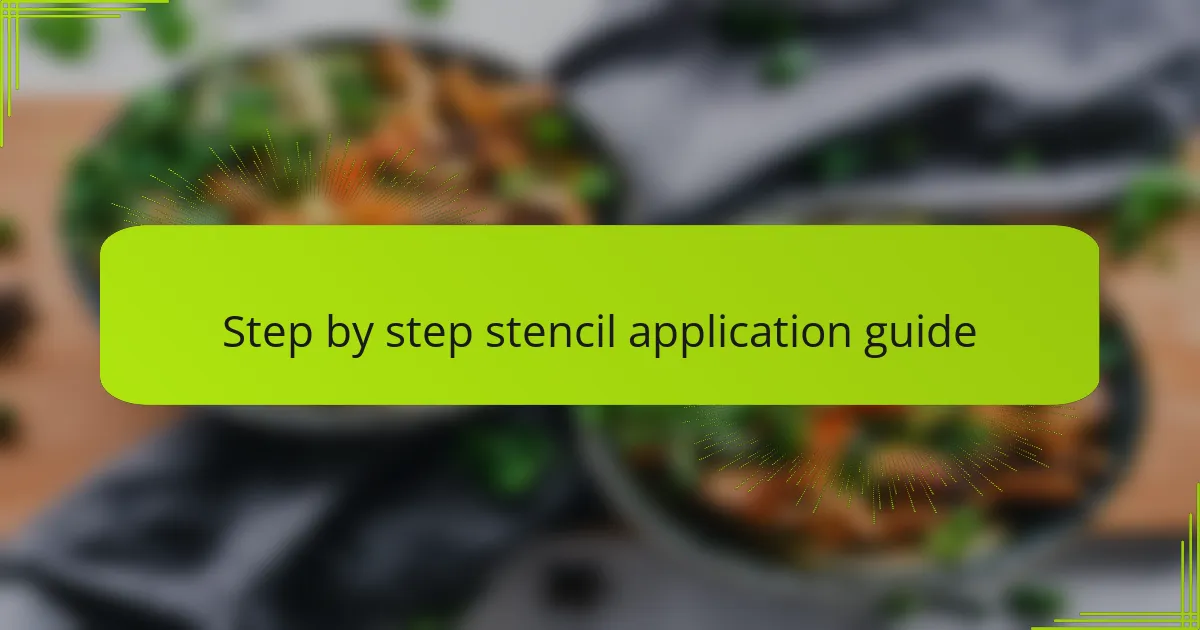
Step by step stencil application guide
When I apply a stencil, the first thing I do is make sure my cake surface is smooth and slightly chilled. This step is crucial because a firm, even base helps the stencil lay flat without shifting. Have you ever tried decorating on a warm cake and ended up with smudges? That quick chill saved me from more than one messy design.
Next comes positioning the stencil carefully. I usually hold it gently with one hand while dabbing the color or icing with the other, using a light tapping motion. It’s almost like a delicate dance—you don’t want to press too hard or too softly. From my experience, patience here pays off; rushing this step often leads to blurry edges, and nobody wants that.
Finally, peeling off the stencil is the moment of truth. I find lifting it slowly and straight up is the best way to avoid smearing the design. Sometimes, I stop myself from breathing too hard—yes, really—to keep everything perfect. Have you noticed how that reveal feels like unwrapping a little surprise? It’s one of the joys that make stencil decorating so satisfying.
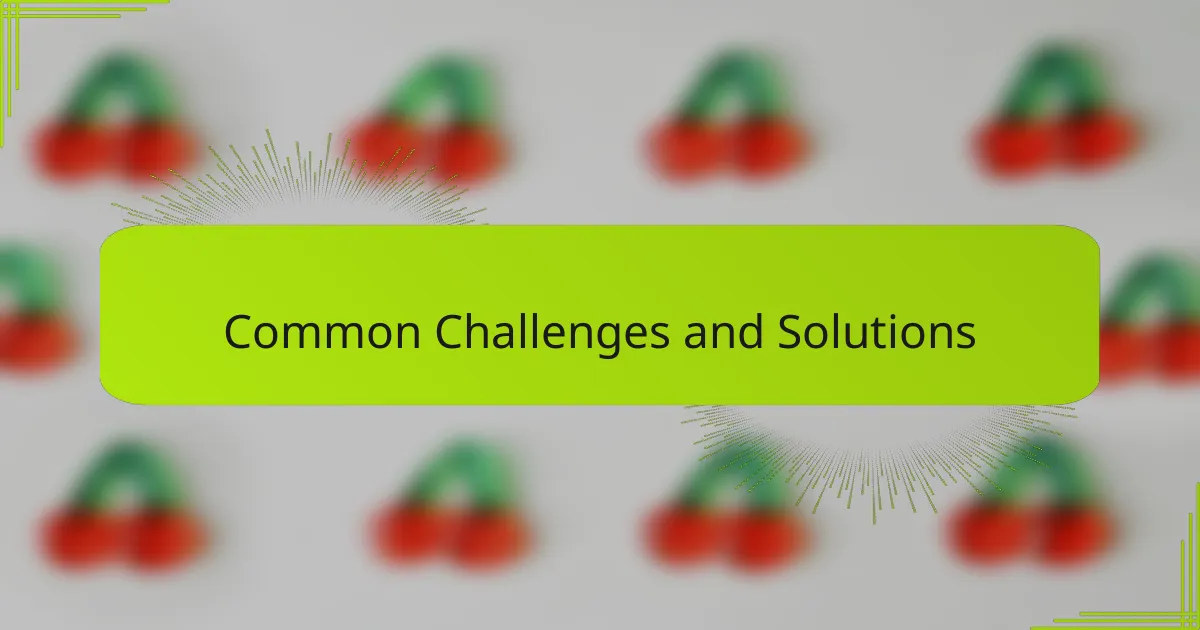
Common challenges and solutions
One challenge I’ve faced with cake decorating stencils is ensuring they stay perfectly in place. I’ve learned that even a slight slip can blur the design, which is frustrating after all that careful dabbing. Have you ever tried holding a stencil steady and felt like you needed extra hands? Using a bit of spray adhesive or taping the edges lightly can make a world of difference, turning a shaky job into a clean masterpiece.
Another hiccup I often encounter is dealing with uneven or soft cake surfaces. From my experience, a chilled, firm base is a must because a soft cake causes the stencil to shift or the icing to bleed under the edges. I once skipped this step and ended up with a messy design that nearly made me toss the cake! Taking that extra time to chill the cake helps keep those crisp lines I aim for.
Sometimes, picking the right tool to apply the icing or color is trickier than I anticipated. I used to just grab any brush or spatula and hoped for the best, but I quickly realized that using a small, dense sponge or a stippling brush helps control the amount and placement of icing. Isn’t it interesting how such small adjustments can elevate a whole design? Finding the right applicator really saved me from smudged or uneven patterns.
